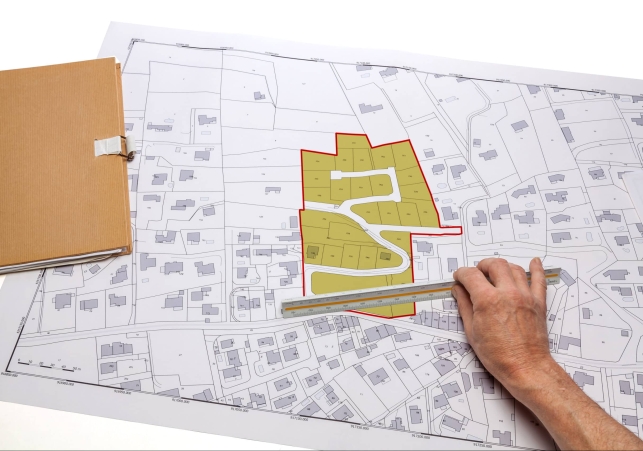Zoning laws and regulations

Zoning laws and regulations play a critical role in shaping the physical and social landscape of cities and communities. They are the legal framework that governs how land can be used, what types of structures can be built, and where they can be located. While often overlooked, zoning laws have profound effects on everything from urban sprawl and housing affordability to environmental sustainability and economic development.
Understanding Zoning Laws:
Zoning laws typically divide land into different zones or districts, each with its own set of permitted land uses, building regulations, and development standards. These zones can range from residential and commercial to industrial, agricultural, and recreational.
-
Residential Zones: These areas are designated for housing and may include single-family homes, multi-family dwellings like apartments or condominiums, and sometimes mixed-use developments.
-
Commercial Zones: These zones are intended for businesses, retail stores, restaurants, and other commercial activities. They may also include office buildings and mixed-use developments that combine commercial and residential space.
-
Industrial Zones: These areas are set aside for manufacturing, warehousing, and other industrial activities. They are often located away from residential and commercial areas due to concerns about noise, pollution, and safety.
-
Agricultural Zones: These zones are reserved for farming, ranching, and other agricultural uses. They typically have restrictions on non-agricultural development to preserve farmland and open space.
-
Special Purpose Zones: Some areas may be designated for special purposes, such as parks, schools, hospitals, or historic preservation.
The Purpose of Zoning Laws:
Zoning laws serve several important purposes:
-
Land Use Management: By regulating land use, zoning laws help communities manage growth and development in a way that balances competing interests and protects the character of different neighborhoods.
-
Promotion of Public Health and Safety: Zoning regulations often include requirements for setbacks, building heights, parking, and other features aimed at ensuring public safety and reducing the risk of hazards.
-
Preservation of Property Values: Zoning laws can help protect property values by preventing incompatible land uses from being located too close to one another and by maintaining the aesthetic appeal of neighborhoods.
-
Environmental Protection: Zoning regulations may include provisions to protect environmentally sensitive areas, such as wetlands, floodplains, and wildlife habitats, and to promote sustainable development practices.
-
Social Equity: Zoning laws can be used to promote social equity by ensuring access to affordable housing, public amenities, and economic opportunities for all residents.
Challenges and Criticisms:
While zoning laws serve many important functions, they are not without their challenges and criticisms:
-
Exclusionary Zoning: Some critics argue that zoning laws are used to exclude certain groups, such as low-income or minority communities, from desirable neighborhoods by restricting the types of housing that can be built.
-
Housing Affordability: Zoning regulations can contribute to housing affordability challenges by restricting the supply of housing and driving up prices, particularly in high-demand areas where there is limited land available for development.
-
Urban Sprawl: Zoning laws that prioritize low-density development can contribute to urban sprawl, leading to longer commutes, increased traffic congestion, and environmental degradation.
-
Lack of Flexibility: Zoning laws can be slow to adapt to changing market conditions, technological innovations, and community needs, leading to outdated regulations that stifle innovation and economic growth.
-
Complexity and Inconsistency: Zoning regulations are often complex and difficult to navigate, leading to confusion and uncertainty for developers, property owners, and residents. Inconsistencies between different jurisdictions can also create challenges for regional planning efforts.
Recent Trends and Innovations:
In recent years, there has been growing interest in reforming zoning laws to address some of these challenges and promote more sustainable, equitable, and inclusive development:
-
Mixed-Use Zoning: Many communities are exploring mixed-use zoning, which allows for a greater mix of residential, commercial, and recreational uses within the same area, promoting walkability and reducing dependence on cars.
-
Transit-Oriented Development (TOD): TOD focuses on creating compact, mixed-use developments around transit stations to promote public transportation, reduce car dependency, and encourage infill development in existing urban areas.
-
Accessory Dwelling Units (ADUs): Some cities are relaxing zoning regulations to allow for the construction of ADUs, also known as granny flats or backyard cottages, to increase housing options and provide additional income for homeowners.
-
Form-Based Codes: Form-based codes focus on regulating the physical form and design of buildings and streetscapes rather than just land use, promoting more walkable, pedestrian-friendly communities with a mix of uses.
-
Inclusionary Zoning: Inclusionary zoning policies require developers to include a certain percentage of affordable housing units in new residential developments, helping to address the shortage of affordable housing in many communities.
Conclusion:
Zoning laws and regulations are a fundamental tool for shaping the built environment and guiding the growth and development of communities. While they serve many important purposes, they also face challenges and criticisms related to equity, affordability, and sustainability. By embracing innovative approaches and reforms, cities and communities can harness the power of zoning to create more livable, inclusive, and resilient places for all residents.
